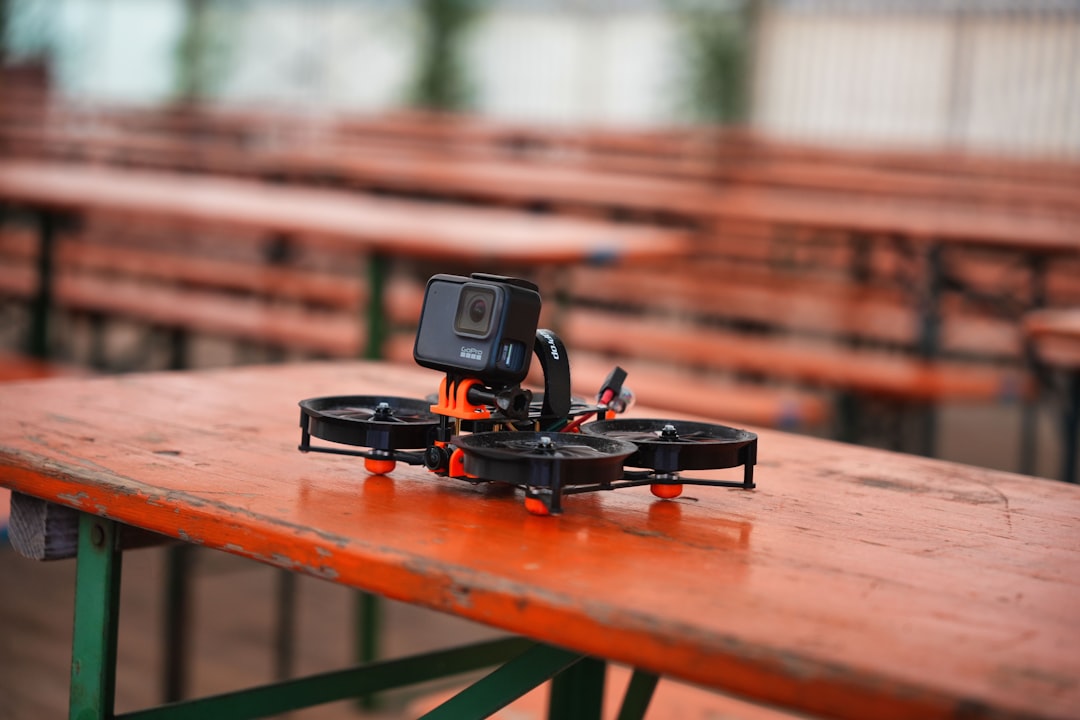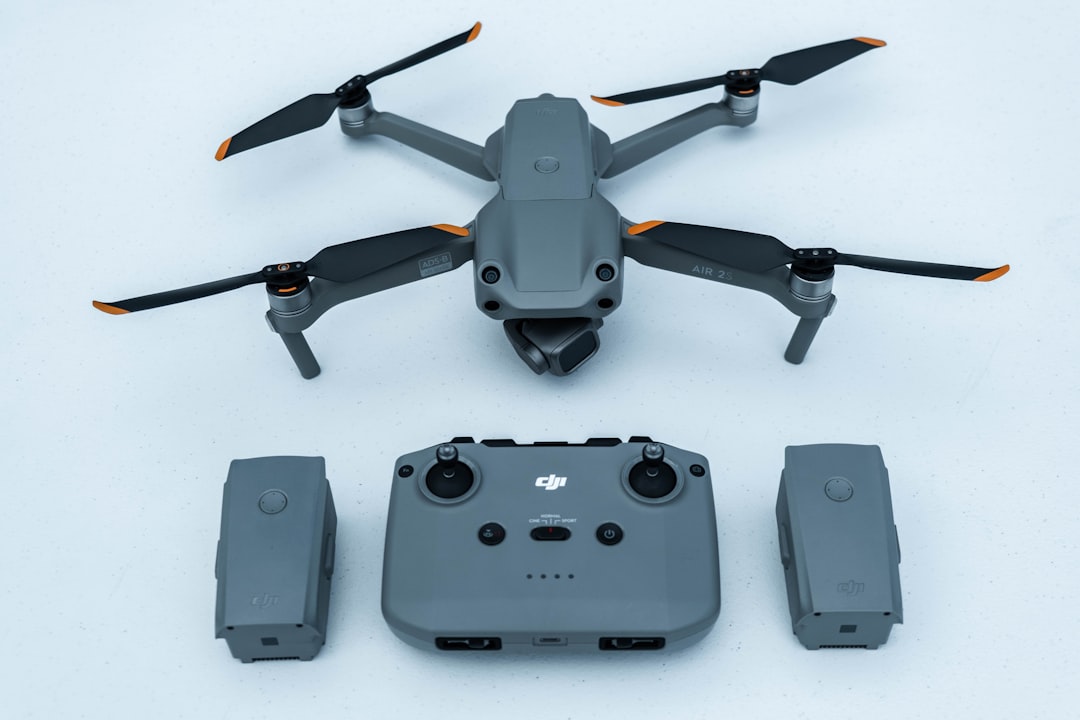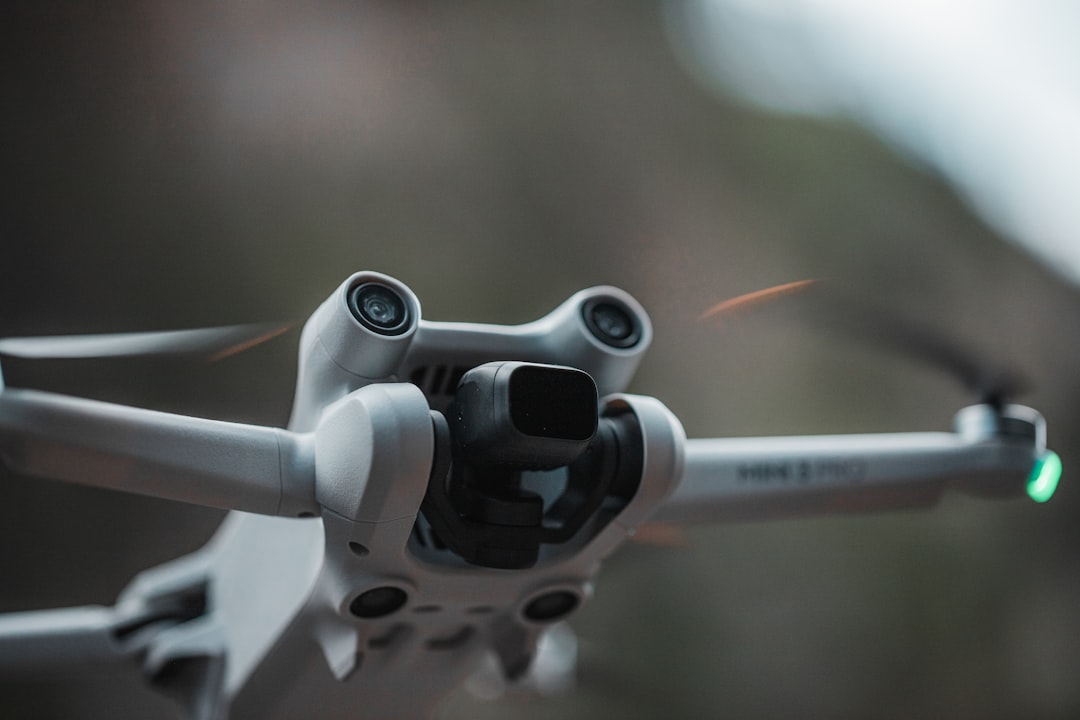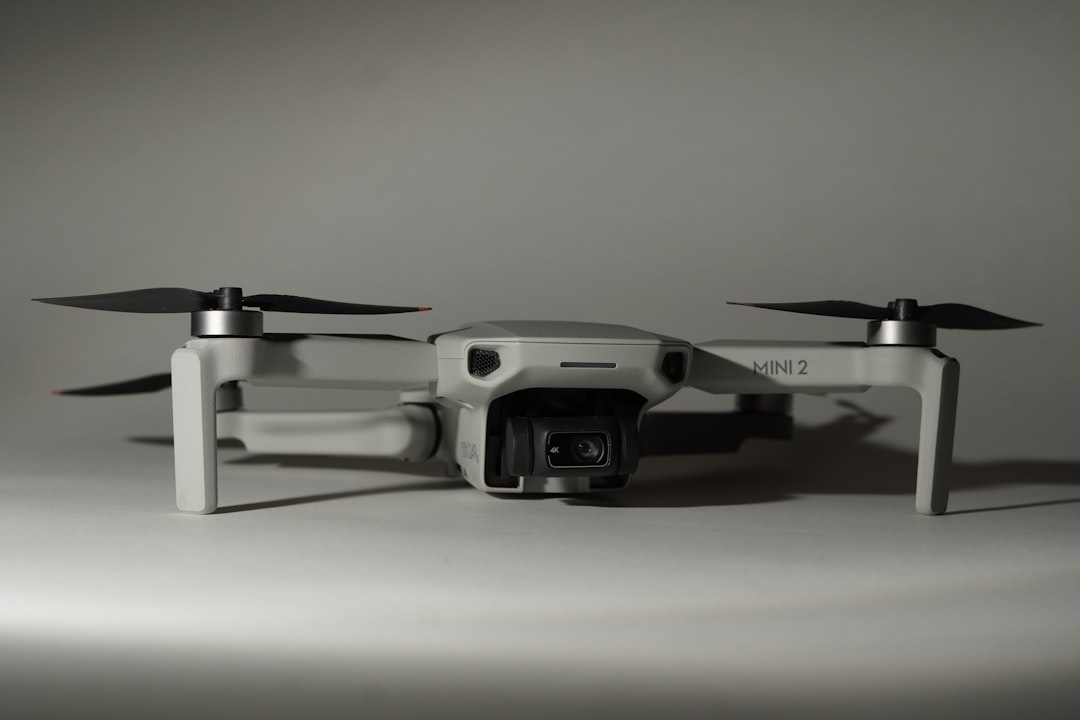

Engage prospects with a scan and streamline customer engagement with FREE QR code marketing tools by Sona – no strings attached!
Create a Free QR CodeFree consultation

No commitment

Engage prospects with a scan and streamline customer engagement with FREE QR code marketing tools by Sona – no strings attached!
Create a Free QR CodeFree consultation

No commitment
Drone repair services face a unique set of operational and customer challenges in today’s technology-driven landscape. Drones are complex, high-value assets, and when technical issues occur, customers expect a seamless, trustworthy repair process that quickly restores their investment to working order. Yet, traditional service models often introduce friction: printed instruction manuals or untracked flyers go unnoticed, while outdated web forms can slow the path to resolution, leading to frustration for both customers and staff.
A major point of friction is missing out on high-value prospects who interact with marketing materials or physical touchpoints but never convert to trackable leads. Without real-time insights into these moments, critical opportunities can slip through the cracks. QR codes offer drone repair providers a simple way to bridge this physical-to-digital divide with Sona QR, ensuring every engagement is accounted for. With a quick scan, customers can access support, book appointments, check warranty coverage, or get real-time repair status updates, with no clunky app downloads or lengthy forms required. These touchpoints not only boost immediate engagement but also unlock a new stream of behavioral data that helps businesses optimize each interaction for higher retention and conversion.
By integrating QR codes across key service points, drone repair firms can streamline intake, reduce missed connections, and move beyond generic customer journeys. This enables personalized maintenance recommendations and more relevant follow-ups, backed by actionable analytics. This article explores practical strategies to deploy QR codes for measurable, scalable results in drone repair services, showing how technology can help address persistent pain points and unlock new avenues for growth.

Drone repair operators consistently face pressure to deliver quick, transparent, and high-quality service, especially as drones become critical to business operations and enthusiast communities. Outdated processes like paper forms, static brochures, and manual check-in sheets limit tracking, introduce errors, and slow resolution. These disconnected workflows bury valuable intent signals and create avoidable gaps in the customer journey.
Modern approaches use QR codes to eliminate these bottlenecks and surface high-fit prospects. QR codes make service intake, warranty registration, and repair updates available in seconds, moving customers from curiosity to commitment without friction. You can design placements that align with real moments of need: on packaging during unboxing, on invoice inserts at pickup, or on workbench signage during consultations. Each scan becomes a trackable signal that powers analytics and follow-up.
For example, swap generic warranty cards for QR codes on invoices or drone chassis labels. Customers can register coverage in seconds, read care tips tailored to their specific model, and opt into service reminders. This approach shortens time to value, captures clean first-party data, and highlights retention-ready accounts you can nurture for maintenance packages or accessory sales.

Drone repair providers often struggle to bridge the gap between initial customer interest, whether triggered by a flyer, a YouTube tutorial, or a service manual, and actual engagement, such as an appointment or inquiry. When a potential customer sees a print ad or reads a troubleshooting guide, there is rarely a frictionless path to take the next step. The result is a leak in the funnel: untracked intent, partial contact data, and missed follow-ups.
QR codes remove this friction by creating a direct, measurable path from offline prompt to online action. With one scan, customers can book appointments, upload damage photos, or check service timelines. They avoid typing long URLs or navigating dated web forms. That speed and simplicity reduces drop-offs at the moment of highest intent. For teams, each scan is a captured signal with location, media source, and time context that makes retargeting and staffing decisions more accurate.
Deploying QR codes on service stickers, receipts, field kits, and hard cases ensures every stage of the journey is both traceable and easy to navigate. You create a consistent, branded path from discovery to delivery that reflects professional standards and builds trust.

In drone repair, customers move quickly from problem discovery to seeking help. QR codes can flex to meet these needs through several formats that map to specific intents and environments. Choosing the right format improves usability and makes your data more actionable.
Dynamic QR codes are best for campaigns or placements that require updates, testing, or performance tracking. Static codes are suitable for permanent fixtures like equipment labels or emergency support cards. Map each format to a precise moment of intent, then measure outcomes so you can refine over time.

Successful drone repair services do not wait for demand to arrive. They activate and capture interest by placing QR codes where intent already exists, turning everyday surfaces into conversion and data collection points. Strategic placement builds a measurable pipeline while improving the customer experience.
Each placement should reflect the environment. For busy counters, large codes and bold CTAs catch attention. For packaging and inserts, supplemental copy can describe the specific value behind the scan. By tailoring the creative and destination by context, you increase scan rates and conversion quality.

QR codes are most effective when they solve real operational gaps and drive measurable outcomes. The following use cases align with common customer interactions in drone repair and deliver clear benefits.
Each scenario closes a loop that is often left open in analog workflows. When a scan leads to a structured digital action, you gain both customer satisfaction and the data required for future personalization.
Each scan is a behavioral signal. By deploying multiple QR codes across your ecosystem, you can tag scans by context, intent, and timing, then use those segments to personalize follow-up across email, SMS, and ads. This approach replaces guesswork with clear, real-world indicators.
Start by aligning codes to lifecycle stages. Awareness codes on event banners identify top-of-funnel interest. Consideration codes in troubleshooting guides capture users evaluating repair options. Conversion codes on invoices or quotes highlight customers at the point of commitment. With proper tagging, you can deliver the right message at the right time.
Learn more about signal-based targeting in Sona’s guide to intent data.
QR codes unify otherwise disconnected campaigns, giving each channel a measurable call to action. When every print piece, display, or event asset drives to a relevant landing experience, you can monitor performance, shift budgets in real time, and deliver a consistent brand experience.
With a centralized platform such as Sona QR, you can manage all codes in one place, update destinations without reprinting, and sync scan activity to your CRM and ad tools. This turns every offline touchpoint into a performance channel that can be optimized just like digital ads.
Successful QR deployment follows a repeatable process. Use this checklist to plan, launch, and optimize campaigns that move the needle on bookings, warranties, and retention.
Focus on one outcome per campaign so your creative, placement, and landing experience all point toward a single action. For drone repair services, high-value goals include repair booking, warranty registration, extended care plan enrollment, and post-service reviews.
Select the format that fits your use case and need for measurement. Most growth-focused campaigns benefit from dynamic codes that provide flexibility and analytics.
Design influences scan rates. Clear CTAs, strong contrast, and a branded frame improve visibility. Testing in real conditions prevents frustrating experiences that suppress adoption.
Roll out codes where they will naturally be seen and used. Match placement to behavior so the path from scan to action is obvious and low effort.
Measurement turns QR from a convenience into a growth engine. Monitor both scans and downstream conversions, then iterate on creative and placement to improve.
A persistent frustration for drone repair firms is that traditional analytics capture only surface metrics like website sessions. Offline triggers remain invisible, and it is difficult to prove which materials drive revenue. QR code analytics change this by tying scans to real outcomes and making the offline-to-online path measurable. See offline attribution for frameworks that connect physical touchpoints to revenue.
Begin by instrumenting each campaign with unique dynamic codes and UTM parameters. Connect your QR platform to CRM and marketing tools so that scan events become contact activities with timestamps and sources. Build dashboards that show scan-to-conversion rates, time to booking, and revenue by placement. With this structure in place, you can reallocate spend toward assets that produce pipeline and away from those that do not.
When you can track the full journey from scan to completed service, marketing and operations can plan with confidence. You will know which investments reduce churn, lift conversion, and unlock cross-sell opportunities.
Sustained success comes from consistent execution and smart iteration. Use these best practices to push scan rates higher and convert more intent into action.
Creative deployments often spark outsized results. For example, place a small QR sticker on each serviced drone’s battery case that links to maintenance intervals and the repair history. Or add a scannable QR on invoices that pre-fills a Google reviews guide and offers a small accessory discount for completing feedback within 72 hours. These small, timely prompts convert attention into action.
QR codes represent a pivotal tool for drone repair providers because they transform static surfaces into measurable, customer-friendly experiences. They close offline-to-online gaps, speed intake, and give teams the data required to personalize outreach and allocate resources wisely. When every handout, label, and display invites a scan that leads to a clear next step, friction decreases and satisfaction rises.
Whether your immediate goal is faster bookings, better warranty compliance, or higher review volume, QR codes aligned to specific moments of intent will lift performance. Dynamic destinations and integrated analytics make it possible to adapt in real time, learn from behavior, and scale what works. Platforms like Sona QR provide the infrastructure to manage codes, track engagement, and connect scans to revenue so QR becomes a durable part of your growth stack. Start creating QR codes for free.
The providers who win in drone repair will be those who treat QR codes not as a novelty but as a strategy. Map your highest-impact touchpoints, design value-rich scan experiences, and build a repeatable process for measurement and optimization. With that foundation in place, every physical interaction becomes an entry point to a smarter, more profitable customer journey.
QR codes have revolutionized the drone repair services industry by transforming traditional maintenance and customer interactions into seamless, data-driven experiences. From quick access to repair histories and instructional content to streamlined scheduling and parts ordering, QR codes enable faster, more transparent service that builds trust and loyalty. Imagine technicians instantly retrieving detailed repair records or customers effortlessly booking follow-ups with a simple scan—saving time and elevating satisfaction at every touchpoint.
With Sona QR, you gain the power to create dynamic, trackable QR codes that can be updated instantly without reprinting, ensuring your repair workflows and customer communications stay current and effective. Every scan delivers actionable insights, helping you optimize service processes and identify opportunities for growth. Start for free with Sona QR today and unlock the full potential of QR codes to drive efficiency, enhance customer experiences, and grow your drone repair business.
The article does not specify exact costs for drone repair as prices vary depending on the issue and service provider.
Signs include technical issues that prevent normal operation, such as damage discovered during use or after a crash, which prompt customers to seek repair services.
You can find reliable drone repair services by searching for local providers who use streamlined digital intake processes, offer transparent repair status tracking, and have positive customer feedback.
Common issues include hardware damage and firmware bugs; solutions involve professional diagnostics, repair booking through streamlined forms, and using QR codes for tutorials, status updates, and warranty registration.
Determining whether to repair or replace depends on the repair cost relative to the drone's value, the severity of the damage, and availability of maintenance support, which can be assessed through consultation and diagnostic services.
QR codes provide quick access to repair booking, warranty registration, repair status tracking, and support resources, reducing friction, speeding intake, and enabling personalized follow-up.
Effective uses include placing QR codes on packaging, invoices, service counters, event booths, and manuals to link customers to booking forms, tutorials, warranty info, and status updates.
QR codes generate trackable scan data tied to locations, media sources, and times, which feeds analytics that measure conversion rates and inform marketing and operational decisions.
Useful formats include web links for bookings and guides, forms for warranty registration, vCards for contact sharing, app downloads for companion apps, Wi-Fi access codes, and prefilled SMS or email messages.
By tagging scans with customer persona, intent, timing, and location, businesses can segment audiences and personalize follow-ups through CRM and advertising platforms.
They should choose a clear use case, select the proper QR code type, design and test codes for visibility and scanning, deploy codes in high-impact locations, and track plus optimize performance continuously.
QR codes eliminate the need for typing URLs or filling lengthy forms by directing customers instantly to relevant digital resources, enabling faster booking and status checking.
QR codes on receipts, warranty cards, or chassis labels allow customers to quickly verify coverage, register warranties, receive tailored care tips, and enroll in maintenance reminders.
By embedding unique QR codes in brochures, direct mail, social media prompts, digital signage, and event materials, they unify campaigns, track performance, and adapt messaging based on real-time data.
They streamline data intake, reduce manual errors, speed up repair workflows, cut down customer inquiries about status, and enable better resource allocation through actionable analytics.
Use Sona QR's trackable codes to improve customer acquisition and engagement today.
Create Your FREE Trackable QR Code in SecondsJoin results-focused teams combining Sona Platform automation with advanced Google Ads strategies to scale lead generation

Connect your existing CRM

Free Account Enrichment

No setup fees
No commitment required

Free consultation

Get a custom Google Ads roadmap for your business






Launch campaigns that generate qualified leads in 30 days or less.
